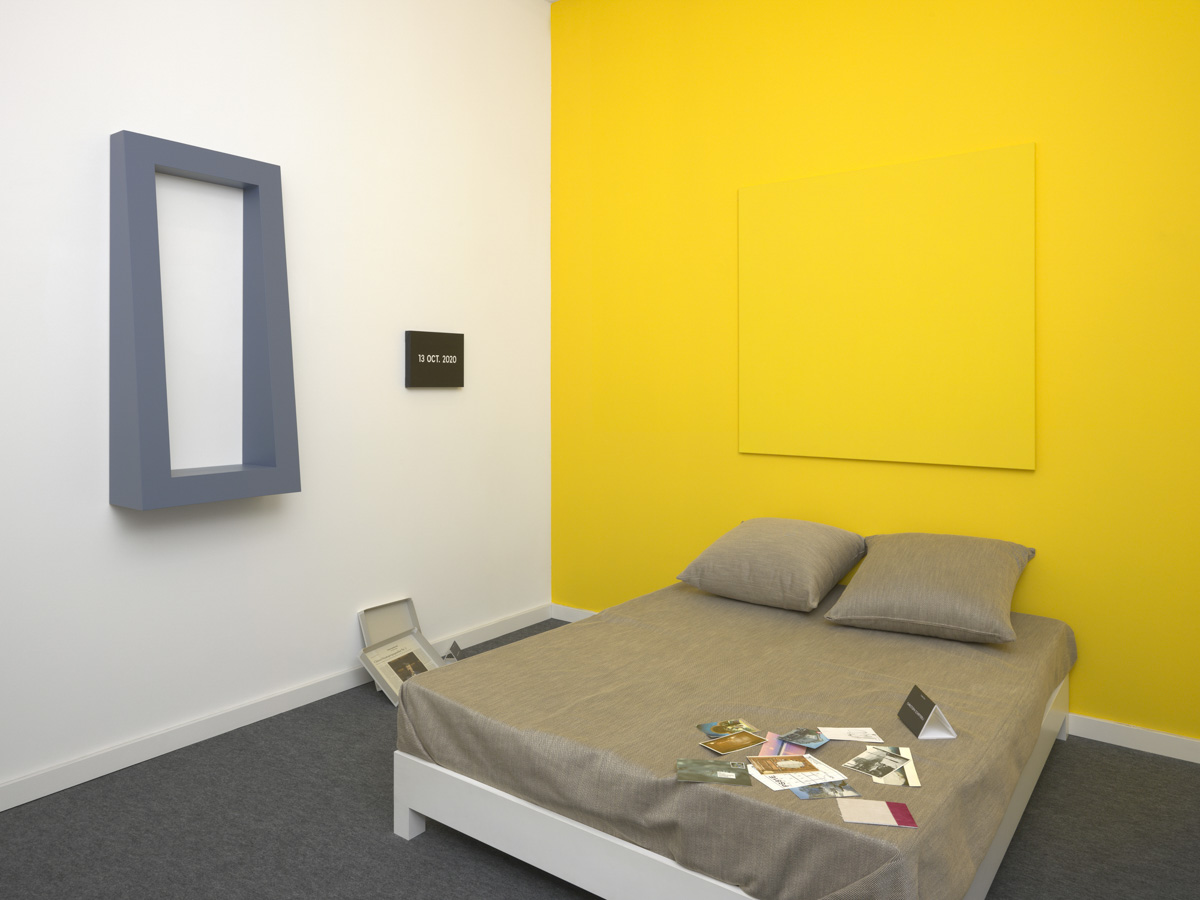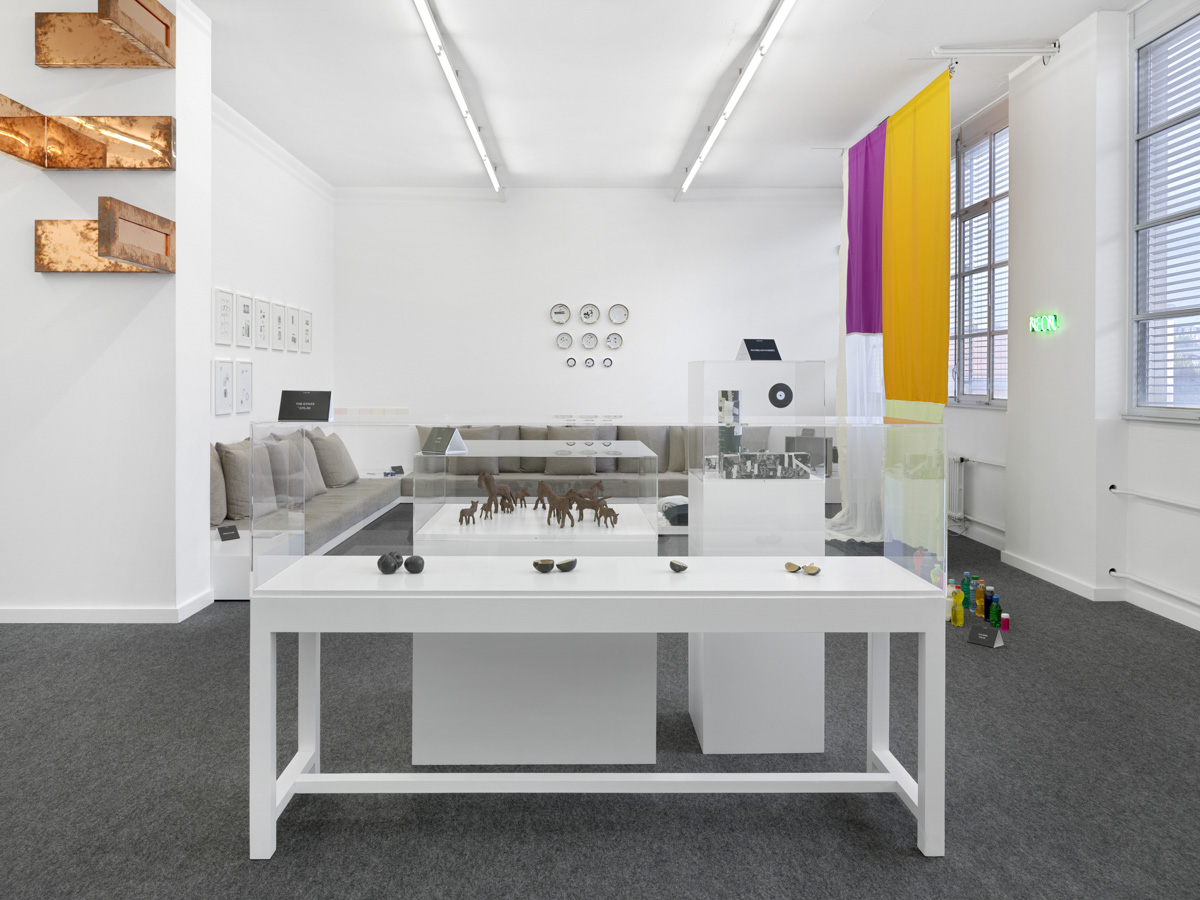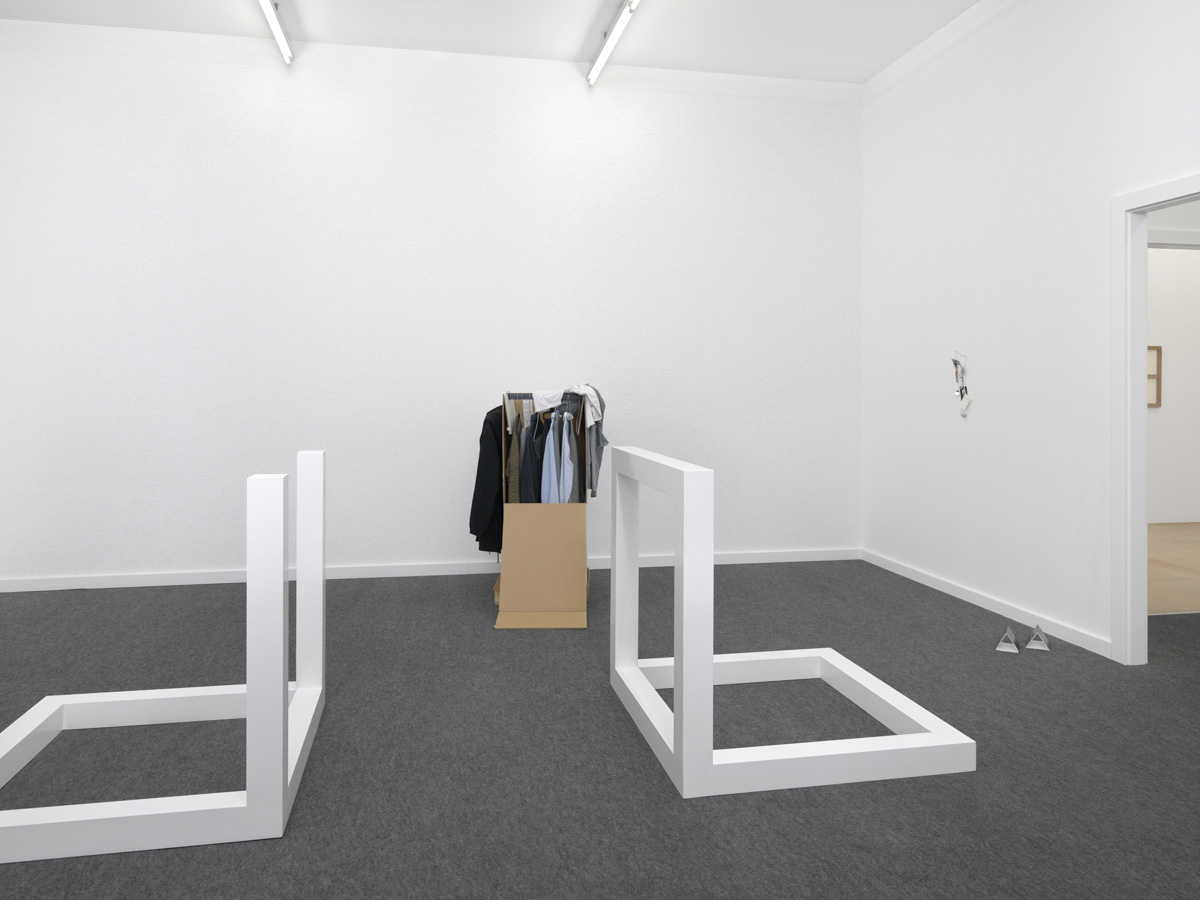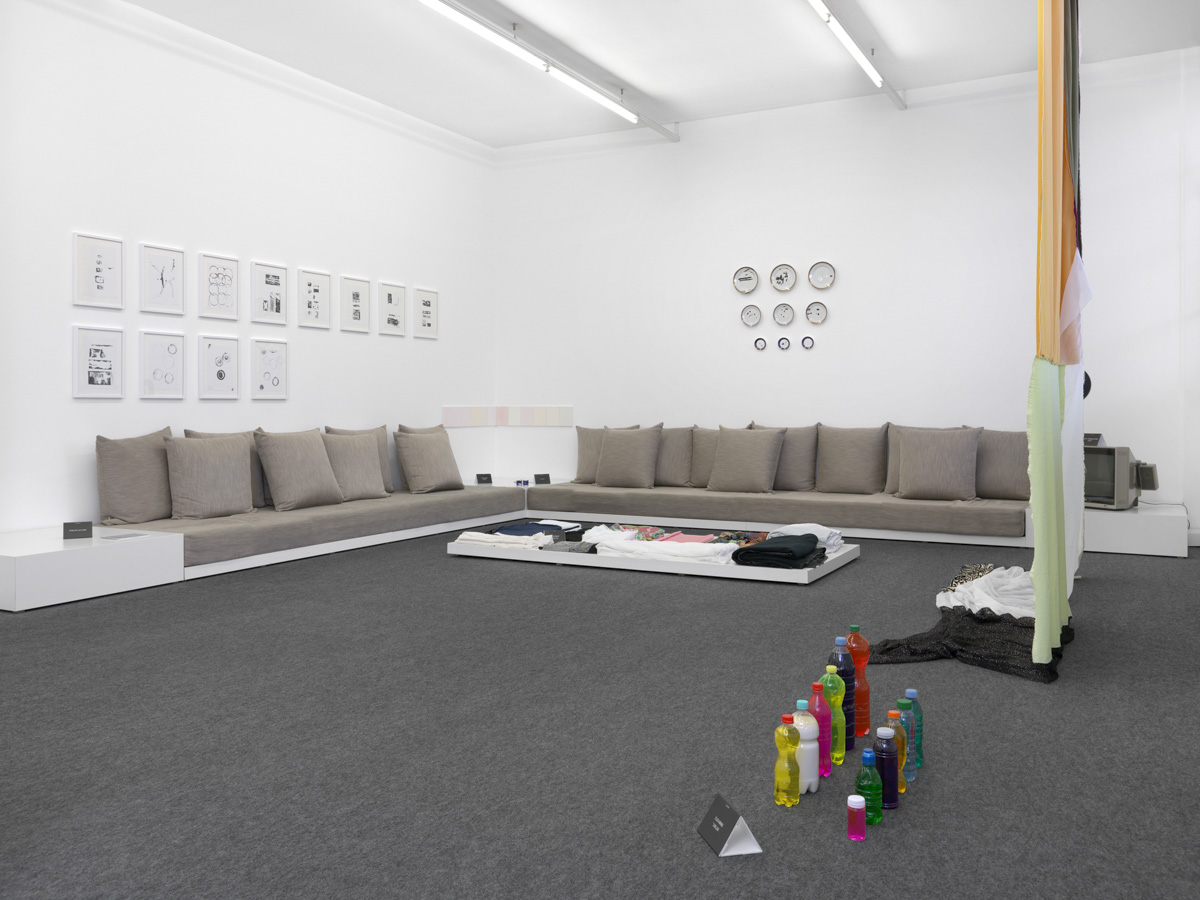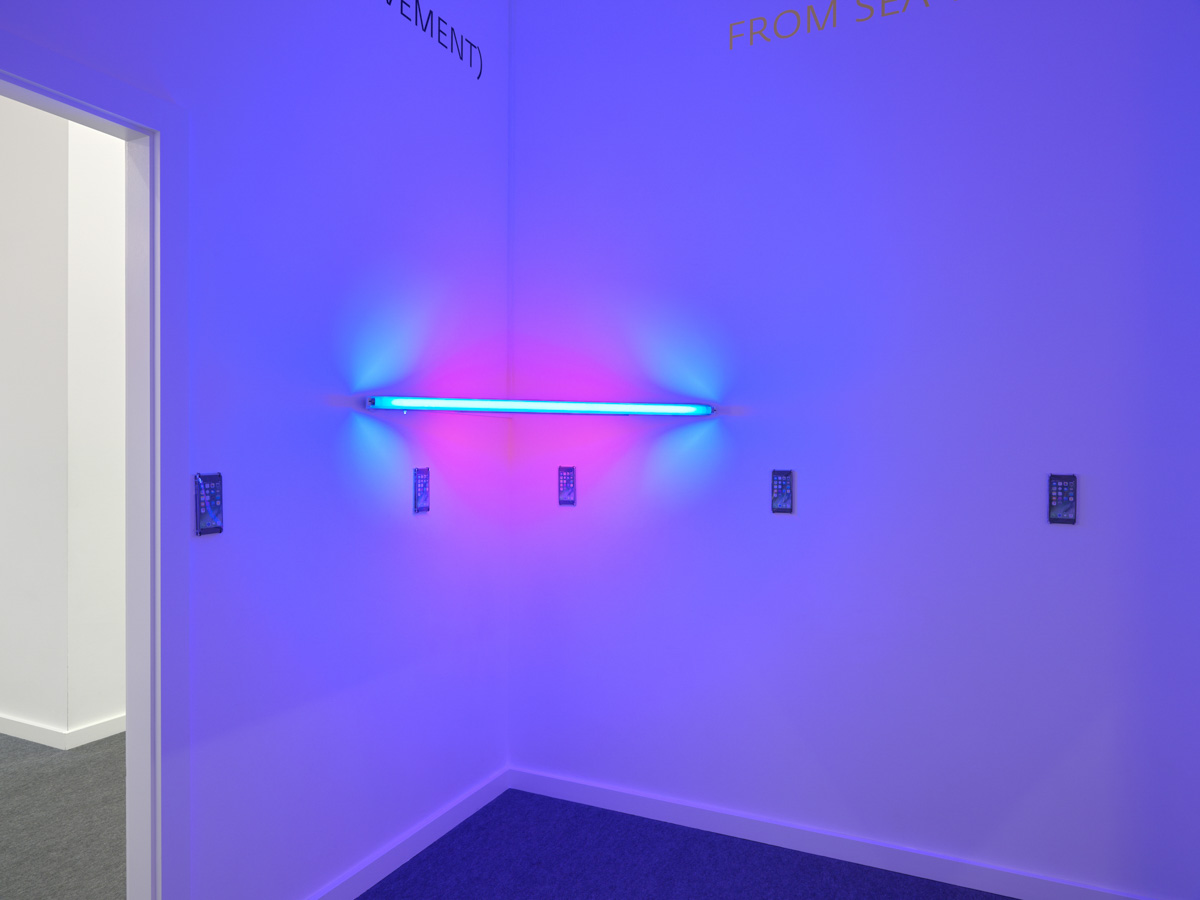An installation by Tobias Kaspar was featured in “The Apartment,” located on MAMCO’S third floor. The Apartment is a unique, paradoxical exhibition space: it is a reconstruction of Ghislain Mollet-Viéville’s Paris apartment at 26 rue Beaubourg where, from 1975 to 1991, the collector promoted Minimal and Conceptual art. “I use the term ‘paradoxical,’ Mollet-Viéville explains, in the sense that, at the end of the 1970s when I opened on rue Beaubourg, this intellectual art form was only being exhibited in sterile ‘white cube’-type spaces. My aim was to make the viewer’s experience of this work more pleasant by exhibiting it in another context—in a comfortable, convivial environment such as an apartment. This was not an obvious strategy at the time.”
In 2020, at the height of the pandemic—and faced with the closure of galleries, art fairs, museums, and art centers—Tobias Kaspar developed a project to “rent his life.” This provided a solution to both his financial difficulties and the absence of exhibition possibilities. In Rented Life, the artist outsourced his monthly expenses by creating a series of lots offered as subscriptions. In the accompanying catalogue, some expenses are generic (insurance, cigarettes, rent), while others refer to personal preferences: “Americano,” “Vegetable Basket,” “Pilates,” etc. Some headings use marketing terminology: the phone lot is entitled “World, salt.ch (Unlimited Phone Data)” and that for music “Music Spotify® Premium Family.” The works offered in exchange to subscribers adhere to various stylistic and narrative registers. The monochrome series, for example, is described as an attempt “to colour-match champagne.” In another lot, a series of photographs was taken with a disposable camera, whose obsolescence echoes that of air travel, a mode of transport severely curtailed by the pandemic. Other works are proposed to cover the cost of the artist using Uber’s ride-hailing service: a series of small clay horse sculptures, executed with finesse and care.
Merchandise is a central theme in postmodernism studies, which views it either as a form of ensnarement or a mechanism to be overcome. The categories listed by Kaspar, who has itemized his life into budget entries and lots, are freed from this issue insofar as they combine elements such as narratives of emancipation and subjugation, a critique of institutions and social standing, marketing, and the “commodification” of culture.
- Exhibition organized by Julien Fronsacq
- With the support of Fachstelle Kultur Kanton Zürich, Landis & Gyr Stiftung, and Stiftung Erna und Curt Burgauer
